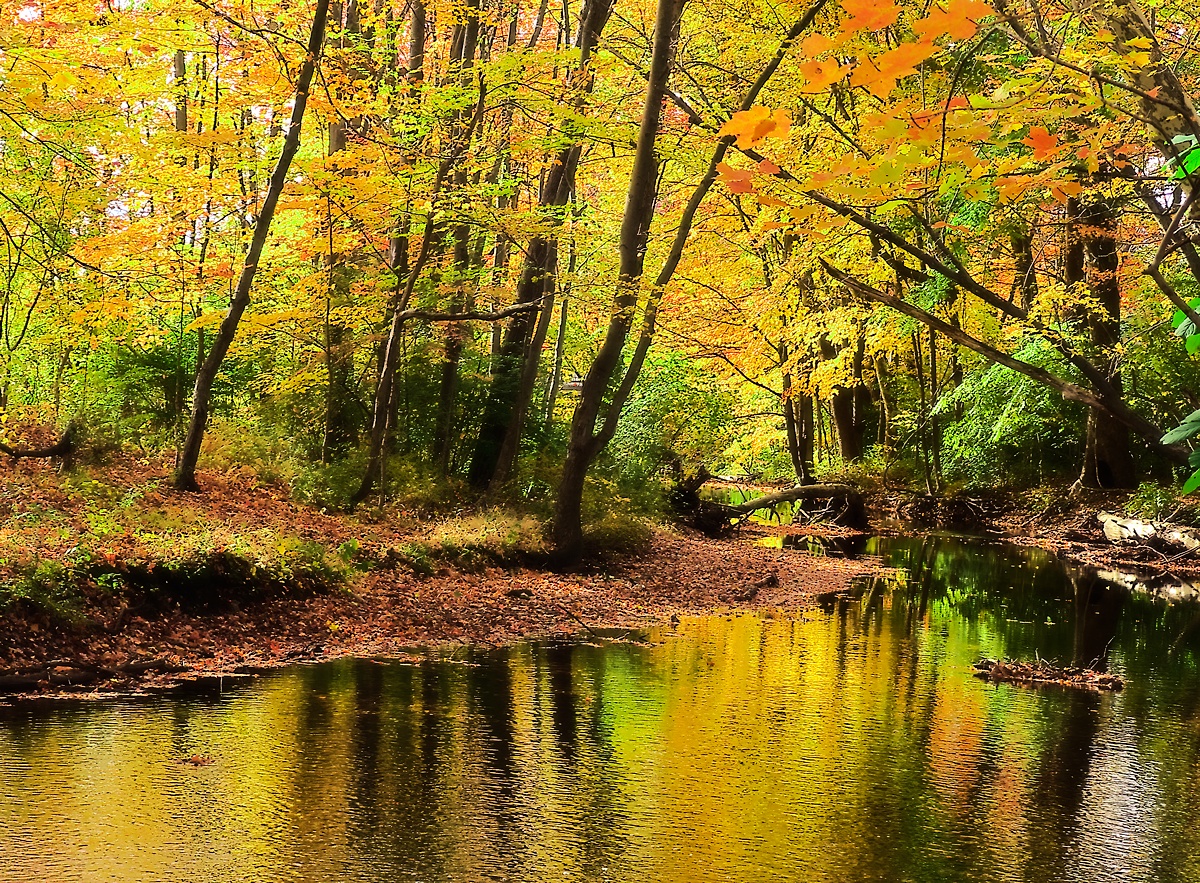Robert Schleif
About the Image(s)
Although the Summer and Fall in the Northeast has made this a less good year than normal for Fall colors, some trees have produced nice leaf colors, particularly these, alongside a small river. The sun illuminated these trees from the back side, and those in direct sunlight just glowed.
To capture the moment, I used my iPhone15 Pro and used the raw file mode. In post I slightly cropped and slightly adjusted the color. This scene activated me to look into why I cannot reproduce the same glowing leaves that my eyes and brain saw. Here is some explanation. Our eyes can register almost a 1,000,000 fold difference in brightness. However, at one instant only about a 100-fold contrast ratio can be seen. Because the retina and subsequent neural processing downstream is very rapid, real life scenes like mine can be perceived as having a considerably higher contrast ratio. LED computer monitor displays, like I have, can display a maximum contrast ratio of 1,000 to 5,000 whereas OELD displays as are in recent smartphones, can have almost an infinite maximum contrast ratio. Hence, when I look at this shot on my phone, I see some of the leaves as glowing, but when transferred to me computer, they don't glow. When it comes to making physical prints, the situation is even more constrained. The maximum contrast that can be obtained on matte paper (my favorite), is from 100 to 200, and on glossy paper, maybe 150 to 300.
These facts illustrate a property of photography that is only sometimes mentioned, and that is compressing the range of brightness in a normal scene, which may be 2,000-fold down to 100 or 200 and still maintain the feel of the real scene.
